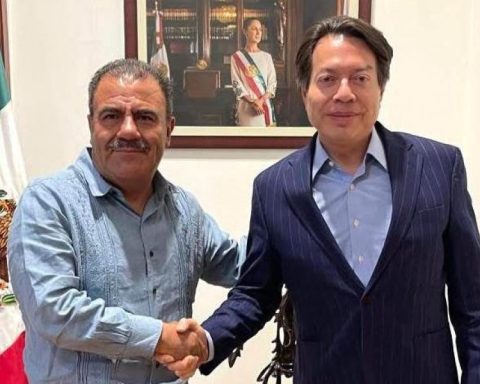A tariff war would threaten this bilateral trade. Various private sector actors and officials warn that the cost would be enormous for both economies, but if Trump’s threat of tariffs comes true, and Mexico decides not to sit idly by, the counterattack could occur in key sectors and states of the United States. .
Carlos Novoa, president of the Mexican Institute of Foreign Trade Executives (Imece), explains to Expansion that the country is also authorized to impose some tariffs when they are not duly justified within the rules of the World Trade Organization (WTO) and the T-MEC itself.
The treaty itself establishes the exceptional measures by which some tariffs can be imposed and their temporality, Novoa points out. So, within the existing legal framework, Mexico could impose reciprocal tariffs.
“And I mean reciprocal, not in the same sectors, but in those sectors in which I know I can affect you.”
For example, Mexico can impose tariffs on yellow corn, since it imports a large amount from the United States.
Data from the United States Department of Agriculture places corn as the main agricultural product sold to Mexico. In 2023 it reached a value of 5,386 million dollars, and from January to September of this year, it totals 4,252 million.
“It is true that imposing a tariff on yellow corn could have inflationary effects, but without a doubt the first to knock on the door of Trump or the White House would be the producers of yellow corn,” says Novoa.
A report from the US-Mexico Foundation and Mexico, how are we doing? points out that this tariff war scenario was already experienced by American farmers with China in 2018-2019, a situation that was detrimental to them, because their exports were significantly reduced, which had a cost of 28,000 million at that time. of dollars for the Trump government, since it had to give them subsidies.
Aim strategically
Jorge Zapata, former Mexican ambassador to the WTO, says that the ideal is for the country to manage to deactivate Trump’s threat of 25% tariffs before he takes office, that is, before January 20 of next year.
If this is not achieved, the most obvious thing is to impose return tariffs. “There are few alternatives beyond that. If we go that route we have to think about how strategic we want to be, if we want to do it horizontally it would aggravate the situation particularly for Mexico.”
Then Mexico must act by targeting products and sectors of certain states and United States senators who mobilize to deactivate Trump’s tariff measures, but “it is going to be painful,” he acknowledges.
Data from the Ministry of Economy indicates that 31% of Mexico’s purchases from the United States are concentrated in six products: petroleum oils; auto parts; gas; internal combustion engines; vehicles, electrical wires and cables and corn.
The T-MEC trade monitor states that the states that sell the most to Mexico are Texas, California, Michigan, Illinois and Arizona, which account for 60%.
The National Council of the Export Manufacturing Industry (index) says that Trump’s tariffs would be a disaster for the United States, as they would cause a contraction of between 3.6 and 7 points of its GDP, raising gasoline and food prices, among many others. .
Zapata says that in the scenario in which this tariff war occurs, what Mexico can consider is to see what it can do to facilitate the business environment internally, to make it less expensive for national companies, because the United States will do so. What to do, he is going to impose tariffs, but at the same time he proposes lowering taxes on his companies.
everyone loses
Governments know the implications of a trade war, at least on Mexico’s side, President Claudia Sheinbaum is clear about this. “To one tariff, another will come in response and so on until we put common companies at risk,” pointing to companies in the automotive sector specifically.
That is why the Sheinbaum government, before reaching tariff measures, will seek collaboration and dialogue on the issues of migration, security and drugs, which are Trump’s pretext to impose tariffs on what he buys from Mexico.
Guillermo Malpica, former USMCA negotiator, agrees that a tit-for-tat strategy is not recommended from the start because, as in the case of China and the United States, it ended in tariffs for practically everything.
“It can be a strategy so that there is an incentive to have a truce, but it can be very dangerous,” he mentions.













